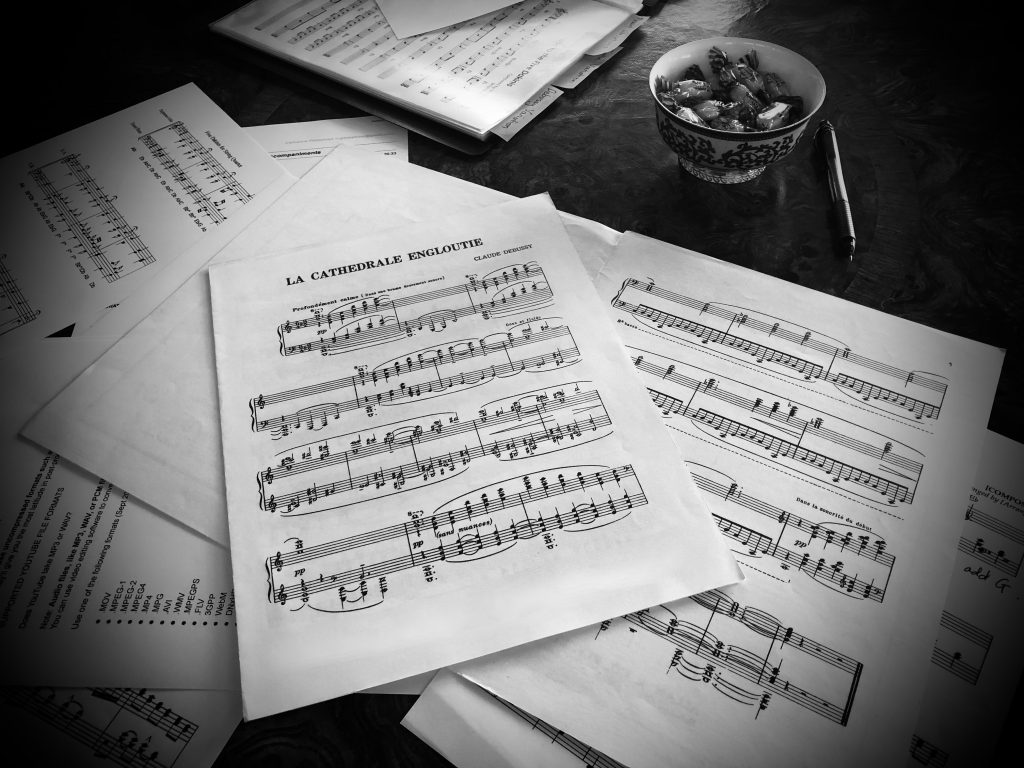Throughout the Covid lockdowns I have been studying music composition with my New York friend and brilliant pianist-improvisation educator Ron Drotos. In this etude I draw on Debussy’s stylistic elements such as open fifths, open voicings, tied notes, omitting the 3rd (making major or minor ambiguous) and other techniques. For me this was an exercise in the creation of (harmonic) tension and its release …
“Pause comfortably on the golden staircase of the inner temple
Rest in peace as soon as you reveal your innermost feelings.“
(ZDR 20 October 2022)
CP in Mongolia on You Tube
______________________
Further Reading
- Jameson, Elizabeth Rose. 1942. A Stylistic Analysis of the Piano Works of Debussy and Ravel. Master of Music, North Texas State Teachers College (98756).
- The Euro-centric musical lineage informing the multi-voice and harmonic techniques of this etude goes something like this: (a) Gregorian Chant (sacred song in Europe in Latin, 9-10th Century) to (b) the Viennese Johann Joseph Fux (1660-1741). For an English language translation and interpretation of Gradus ad Parnassum (1725) see The Study of Counterpoint from J.J. Fux’s Gradus ad Parnassum by Alfred Mann (W.W. Norton & Company New York, to (c) JS Bach (1685-1750) 2-3-4 part tonal harmonic techniques, to (d) Cesar Franck (1822-1890) a Conservatory professor, composer, performer and improviser, and then to (e) Claude Debussy (1862-1918).
Refer to the INDEX for other articles that may be of interest.
© 2013-2024. CP in Mongolia. This post is licensed under the Creative Commons Attribution 4.0 International License. Documents linked from this page may be subject to other restrictions. Posted: 19 June 2022. Last updated: 22 October 2022.

